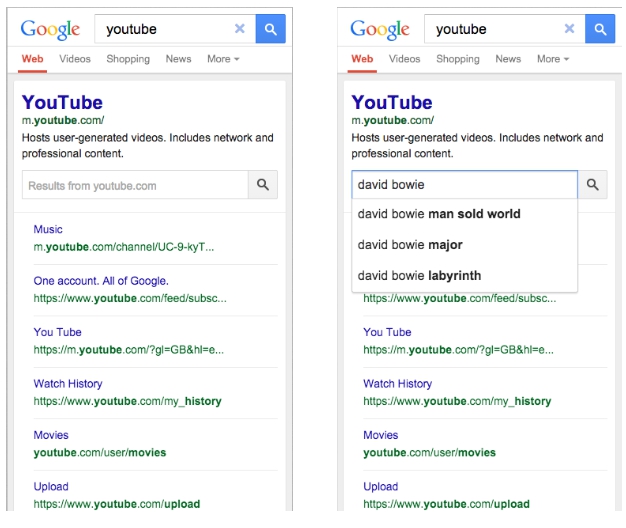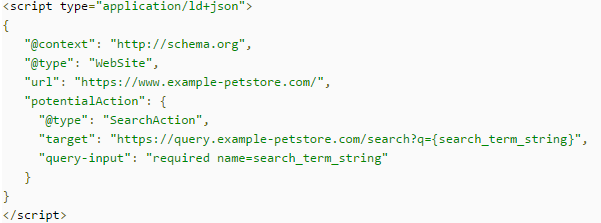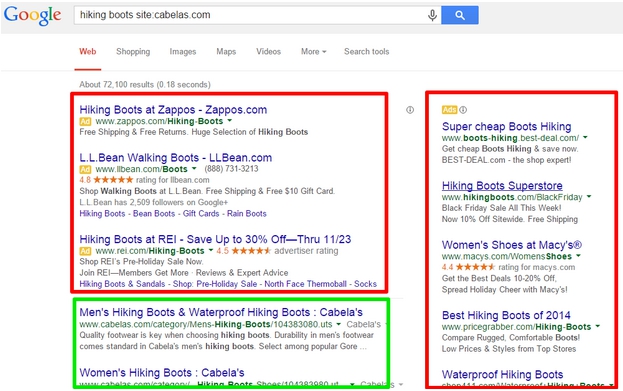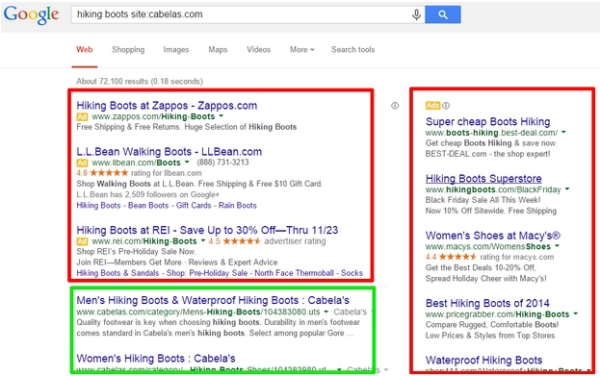On September 5th, Google announced their “new and improved” sitelinks search box (blog post announcement). I’m sure that this was a well intentioned action on Google’s part, but it may not be beneficial for you. This experience will steal branded traffic, potentially direct visitors to incorrect pages, and deprive users of the experience you’ve created for them.
I have no blanket recommendation for you – whether you should use the sitelinks search box depends entirely on your situation. One thing is clear though if you do want to use it. It’s critical that you add the code to support the proper functionality rather than relying on Google to use the site:search operator and lose branded organic search traffic.
What is Google Sitelinks Search Box
Before we get into it, I’ll actually define the Google sitelinks search box. It’s a search box on the Google search results page that allows you to search a website right from Google, taking you to a search results page on your site. Instead of going to a brand’s website and then clicking through or searching to a more specific page, Google wants to be the facilitator of your experience rather than letting the brand own the experience.

How to Get the Sitelinks Search Box
The sitelinks search box only shows up for branded searches. If you want the sitelinks search box to show up for your branded terms, you have to perform the following:
- Have internal search setup and properly functioning on your site
- Put the Schema search action code on your site – Google recommends using JSON-LD formatting and requires you to use the “url”, “potentialAction:target”, and “query-input” fields.
- Establish the preferred homepage with the rel=canonical link tag

Full implementation documentation
If you don’t implement the above steps, Google will just do a “site: search” of your website, producing the same results.
Why You Don’t Want Google Sitelinks Search Box
As I had initially referenced, there are three significant problems that I see with the sitelinks search box:
- It will reduce your branded organic traffic
- It deprives users of the experience you created
- It might not actually work properly
Google Sitelinks Stealing Branded Organic Traffic
If you don’t actually set up the sitelinks search box and Google is simply leveraging the “site: search” functionality, you can end up in a lot of trouble.
Take the search below for “Cabelas”.

When a user searches for something more specific via sitelinks search box (such as hiking boots in the example below), Google is going to show ads despite the users intent to only see information from one brand.
When this happens, your brand has to compete yet again for the consumer. Even though the consumer initially intended to go to your brand’s website, they are bombarded by competitors’ paid ads, making you re-compete with other brands to bring the visitor to your website.

In this example, though the initially search was for Cabelas, only two of the 10 results visible results, thanks to paid ads.
While this effort may have been implemented with the best intentions, this implementation will lead to the siphoning of your organic traffic. Not only might you lose branded organic traffic to your own paid search, there is a very real possibility to lose visitors to your competitors ppc campaigns.
Depriving Users of Your Experience
Sending users directly to a search results page may be beneficial in some cases, but it’s often not the best situation. The homepage experience should be designed to present a unique branded experience. You can take this a step further – many sites try to collect information from users on the homepage in order to provide a more customized experience throughout the site.
If you’re sending users to a search results page, you are depriving them of an experience and limiting your opportunities..
Sitelinks Search Box May Not Work
If the user is looking for a page that is part of a temporary campaign marked with a noindex tag (or any other page with a noindex command), a site:search won’t return the page. If you have set up the code to get a proper sitelinks search box, you will likely run into the same issue – I have yet to see this though.
How to Opt Out of Google Sitelinks Search Box
If you don’t want the sitelinks search box, there’s good news. Google has provided a way to opt out of their sitelinks search functionality.
Simply use the “nositelinkssearchbox” meta tag in the <head> section of the homepage to disable sitelinks search box:
<meta name=”google” content=”nositelinkssearchbox”>
Note: Google says this will likely take several weeks to be removed from search results
If connecting with your users and giving them a specific branded experience is important to your sales process, then you should think twice about using sitelinks search box. On the other hand, if you’re not concerned about delivering a brand experience and your deep pages have a high conversion rate, the sitelinks search box probably won’t hurt you. What is certain though is that you should properly implement the sitelinks search box rather than letting Google use the site:search operator to avoid losing branded organic traffic.

Hey Geoff, I’ve been advocating…nearly since this new sitelinks search box was released, against implementing it due to the exact reasons that you mention. This new feature from Google, in my opinion, is more about Google keeping people on Google (perhaps in hopes that they click an ad and make Google money) than it is about helping people find what they are looking for on a particular brand’s site.